Discover everything that mustn’t be missed when you take a trip to Antequera, together with Ruralidays. You’re going to love it!
Antequera is situated at the “heart of Andalucia“, and is known as such thanks to its geographic location at the crossroads between Seville, Malaga, Granada and Cordoba, as well as for its historical and artistic heritage.
The town of Antequera forms one of the largest municipalities in the province of Malaga and one of the biggest in Spain, meaning that since time immemorial travellers have left behind their mark on the district, together with a wealth of cultural and heritage assets.
How to get to Antequera
From Malaga to Antequera by car, the fastest route is the A-45, also known as the Malaga highway. When you get to Exit 102, continue on towards the A-7282, which will take you right to Antequera town centre.
If you don’t have the option of travelling by car, you can choose to travel either by bus or train from Malaga. With the former, you will be dropped at the Antequera bus station from the Malaga bus station: the 1hr journey costs €6. If you prefer to travel by train, Renfe provides a service on the High Speed line, from Malaga Maria Zambrano station to Antequera Santa Ana: a journey of 20-25 minutes for a ticket price of between €7.85 (with AV city) and €36.15 (with AVE).
History of Antequera
The area around Antequera has been inhabited since paleolithic times, thanks to its natural riches and the area’s geographical context, which prove ideal for survival. Most notable are the Bronze Age cultures, of which numerous remains are preserved such as the Dolmen ensemble of Menga, Viera, the Romeral (near Antequera) and the Alcaide (near Villanueva de Algaidas). These dolmens have been dated to between 2,500 – 2,000 BC although many historians believe them to date to around 4,000 years ago.
The founding of Antequera as we know it today goes hand-in-hand with the appearance of the Roman municipality of Antikaria, where, additionally, the only College of Pontiffs of the Caesars in Spain was located.
During Moorish rule, this was Medina Antaqira, and from the middle of the 18th century, the Crown of Castile recognised the strategic importance of the town. Antaqira was conquered by Don Fernando (whose alias was ‘he from Antequera‘), on the 16th September 1410.
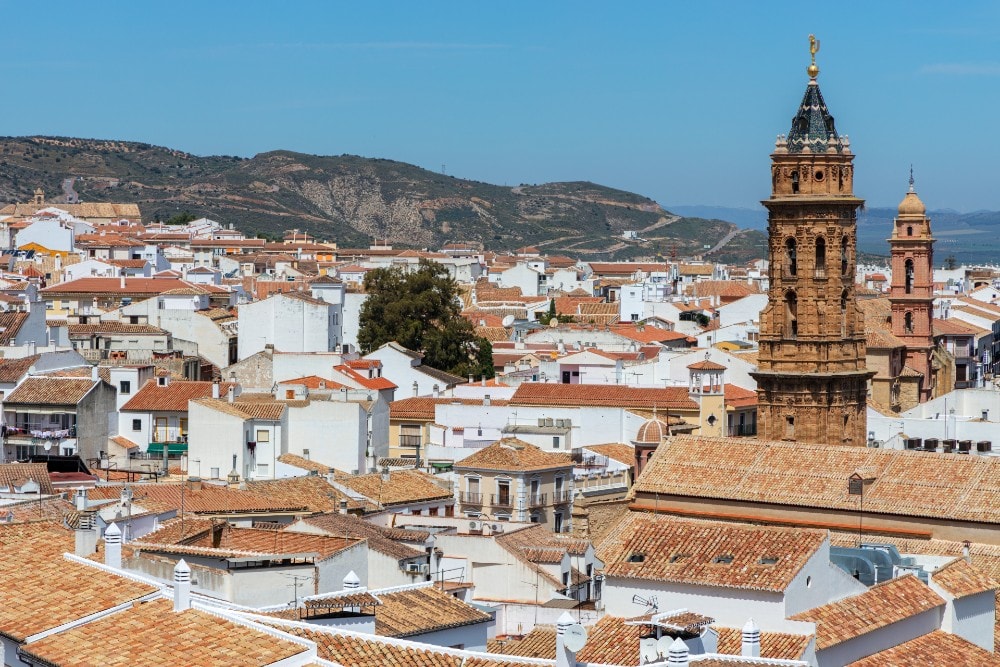
Despite all of these eras contributing to the significant legacy of the Antequeran community, the Christian Reconquest—during which Antequera was to become one of the most important towns in Andalucia, thanks to being a commercial hub between Seville, Granada, Malaga and Cordoba—stands out from the others. Moreover, throughout the Christian rule, major construction works were completed as well as expansions of the urban centre. It was declared a city on the 9th of November 1441.
What to visit in Antequera
Antequera is one of the most monumental towns in Andalucia: some 75% of the historical and artistic heritage of the province of Malaga can be found in this municipality. Among these assets are several visits that can’t be missed if you want to take make the most of your time.
Highlights of a trip to Antequera should include the following museums, monuments and points of interest:
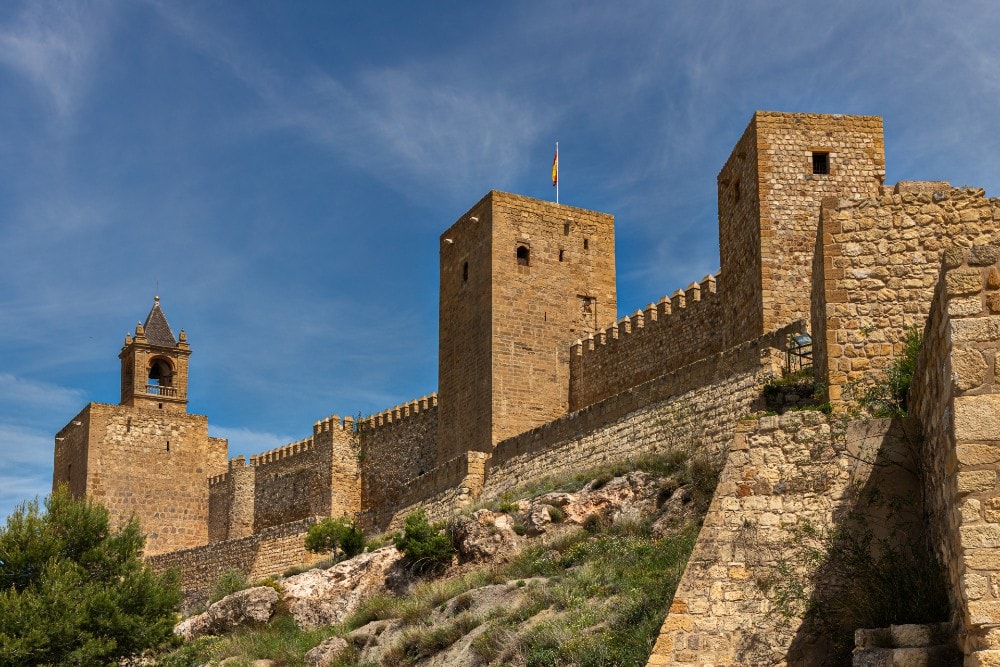
- Alcazaba, named a Place of Cultural Interest, of which the Torre del Homenaje or Tribute Tower is of note, the widest of any Muslim alcazaba after the Calahorra in Gibraltar.
- Dolmens of Menga and Viera, and Torcal de Antequera. The first signs of human presence in the Antequera region, dating to the Paleolithic. You can find more information about these natural formations and paleolithic monuments in this post.
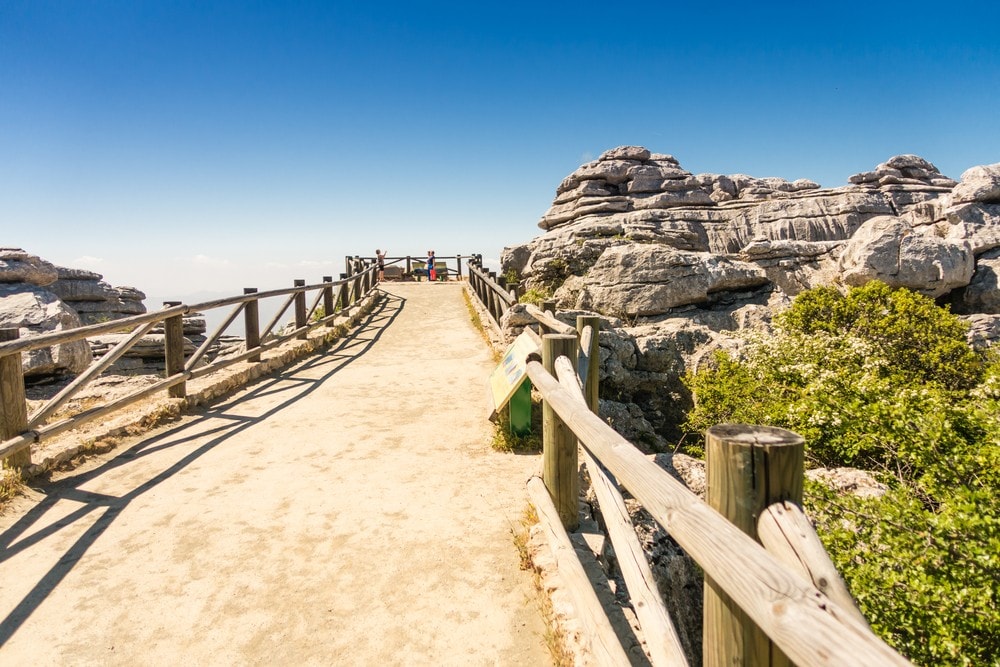
- Municipal Museum. Housed in the Palacio de Nájera, which itself dates to the 18th century, this museum is one of the best in Andalucia and recounts the history of Antequera and its lands, through a broad collection of archaeological, historical and artistic remains. It also offers workshops and a 360º immersive room, to digitally experience the ‘Correr las vegas‘, a typical feature of Antequera’s Easter celebrations.
- Convento de Belén, famous for its butter-cakes and other top quality handmade products that can be bought inside, made by the nuns that live in the convent.
- Real Colegiata de Santa María la Mayor, the most important Renaissance-era (16th century) building in the town and the first columnar church in Andalucia, as well as one of the first in the whole of Spain.
- Plaza de San Sebastián: in this square you can find a Renaissance-era fountain at the centre and the Collegiate Church of San Sebastián.
- Convento de la Encarnación, one of the oldest convents in Antequera, belonging to the Order of the Barefoot Carmelites.
- Convento de San José and Museo Conventual de las Descalzas, founded by the Barefoot Carmelites of Santa Teresa in the year 1632. Of note in the convent is the ‘Virgin with child adored by St. Michael, St. Gabriel, St. Ildefonso and St. Catherine’. The museum displays a huge variety of artworks conserved by the Carmelites over many years.
- Palacio de los Marqueses de la Peña de los Enamorados, former School of Carmelites and one of the most interesting in terms of its civil character. This palace was property of Martín de Rojas Manrique, who participated in the Christian reconquest of Antequera and whose descendent was granted the title of Marquis of the Peña de los Enamorados.
- Convento de la Victoria, whose most unique characteristic is the central balcony and two side balconies, thanks to which it looks like a civil building.
- Convento de Santa Eufemia: convent from the 17th century dedicated to the patron saint of Antequera, St. Euphemia. The church which can be visited today dates to the mid-18th century.
- Iglesia de Santiago. This church has served as parish church since the year 1822, although it was built back in 1519.
- Puerta de Granada and Puerta de Málaga. The latter gateway was declared a National Monument, expression of Muslim art in Antequera. The Puerta de Málaga is also known as the Chapel of the Virgin of Espera.
- Real Monasterio de San Zoilo, also known as the Monastery of St. Francis, due to being founded by the Observant Franciscans in the 16th century. This monastery has been declared a Historic-Artistic Monument.
- Iglesia del Carmen, former church of the Barefoot Carmelites and the only building in the province of Malaga to boast a corpus of Baroque altarpieces.
- Arco de los Gigantes: arch measuring more than two metres thick. Here you can see inscriptions linked to Roman Anticaria and several outlying towns of the time, as well as a dedication to King Philip II.
- Iglesia de Santa María de Jesús, church dating to the 17th century that has undergone numerous refurbishments since it was almost entirely destroyed in the French invasion.
- Capilla-tribuna de la Virgen del Socorro: to access the chapel-tribune, you have to go up some very steep streets, although the views are worth it.
- Iglesia de San Juan Bautista, a church in which a depiction of the Cristo de la Salud y las Aguas, patron saint of the town, is housed.
- Iglesia de Santo Domingo: in this church you can see the image of our Lady of the Rosary, the apotheosis of St. Thomas Aquinas on the door of the shrine, and the painting of “La Epidemia”, which depicts Antequera during the plague of 1679.
- Bullring. With capacity for 6150 spectators, the Antequera bullring is one of the most colourful in Andalucia. It was used as a location to shoot adverts and even for the Madonna music video, ‘Take a bow’.
- Convento de San Agustín, one of the town’s oldest convents and located in a square where all of the brotherhoods or cofradias gather during Antequera’s Holy Week.
Your holiday home in Antequera
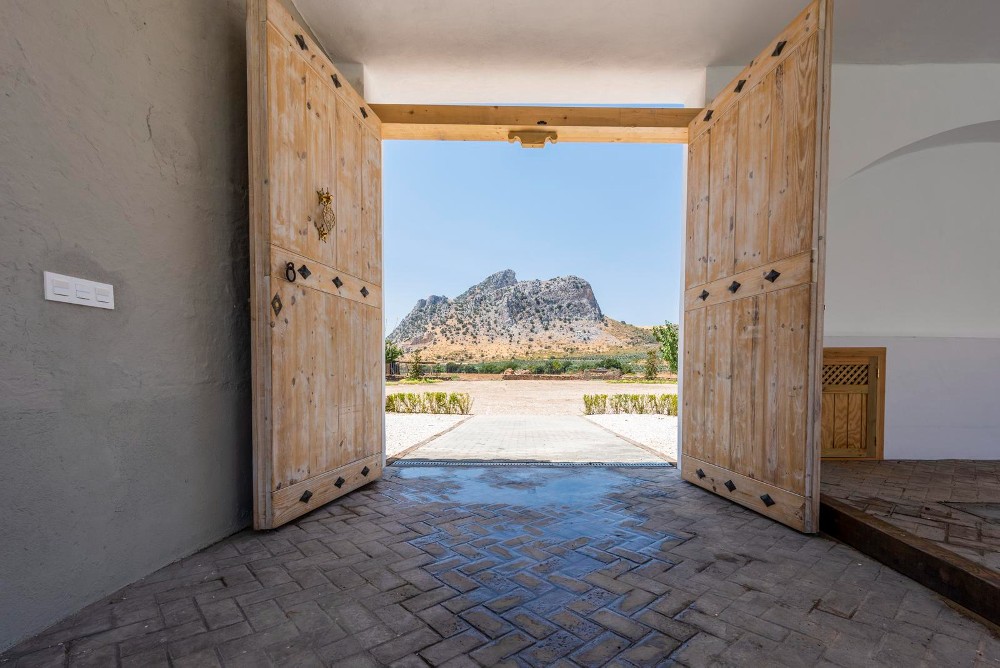
To make the most of your stay in Antequera, why not stay in some of the accommodation that typifies the outskirts of the town. Holiday homes in Antequera feature fantastic private pools, luxury facilities and views that will take your breath away. If you don’t mind staying a bit further out of the town, then consider the district of Antequera, where you’ll find many holiday homes that satisfy your every wish.

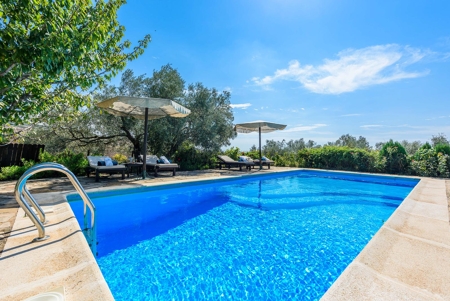

Festivals in Antequera
Festivals and events in Antequera are the best way to immerse yourself in the local culture and really get to grips with its idiosyncrasies. One of its main characteristics is the fact it boasts two main fairs, a unique feature of the municipality.
Easter
When: from the 2nd – 9th April 2023
Just like the rest of Malaga province, the Holy Week in Antequera has some twists of its own as well as similarities to the other celebrations. One highlight, for example, is the ‘Correr la Vega‘ or ‘running the plain’ event, i.e. quickly taking the thrones up steep slopes, at the end of which the headquarters of the brotherhoods are found. The Nueve Cofradias (Nine Brotherhoods) are out from Palm Sunday to Easter Sunday, not including Holy Saturday.
Señor de la Salud y de las Aguas
When: from the last Saturday in April to mid-May
Taking place on the last Saturday in April is the transfer of the image of the Santísimo Cristo de la Salud y de las Aguas (Holy Christ of Health and Waters), the patron saint of Antequera, to the inside of the Church of San Juan Bautista. The following Saturday on the 18th of May, the Lord’s Procession is held.
Spring Fair
When: final week of May
Antequera has two fairs throughout the year. The first is known as the Spring Fair or AGROGANT (Agricultural and Livestock Fair of Antequera), which includes culinary events, photography competitions, auctions of goat breeds, and horse championships.
Real Feria de Agosto
When: from the 17th – 21st August 2020
As with the Feria de Malaga, Antequera’s Real Feria de Agosto is divided into the ‘Day Fair’ and ‘Night Fair’. The Day Fair is held in the town centre, while the Night Fair moves on to the fair grounds. The bullfights and bullfighting festival held parallel to the Fair are famous, together with the Dia del Caballista or Rider’s Day, (the Saturday) when, around noon, the Royal Ride starts, culminating with awards in various categories (best horseman, best horsewoman and best couple).
Virgen de los Remedios
When: 8th September
On the 8th of September, Antequera holds a procession to celebrate its patron saint, whose image is housed in the Convent of Nuestra Señora de los Remedios. The procession normally takes place in the evening after mass, and goes from Calle Infante Don Fernando along Calle Lucena, Calle Cantareros and Calle San Luis.
Santa Eufemia
When: 10th September 2022
The day of Santa Eufemia, the town´s patron saint, is in fact the 16th of September, coinciding with the date of the Christian troops’ conquest in 1410. However, the celebratory procession is held the prior Saturday, with the Solemn Mass on the Sunday.
Día de Jeva/ Jeva day
When: 25th December
On Christmas morning, the Virgin of the Purification is celebrated in the Chapel of Jeva, to the south of the Torcal Natural Park. A small procession takes place, together with tastings of typical local sweets and music performances.
Antequera cuisine
The local cuisine is based on products harvested from the land, in particular the fields of the Antequera plains, and specifically olive oil and vegetables, as well as cereal grains.
One highlight of Antequera’s cuisine is the porra antequerana, a type of cold soup made with bread, oil, tomatoes, peppers and garlic, perfect for the hottest summer days. Ajoblanco (garlic and almond dip), gazpachuelo and migas (a breadcrumb dish) are other typical dishes in Antequera’s cuisine, as they area throughout the province of Malaga.

Game dishes, and in particular, pickled products (a method of preserving foods in vinegar) are highlights of the main courses, which may be served up with mollete de Antequera, a type of lightly baked white bread. Speaking of desserts, you can’t miss bienmesabe, the typical Antequera sweet treat. This can be bought in the town’s bakeries or even in the Convent of Belén, where the nuns make the sweet by hand.
Further information on Antequera
- Area: 794 km2
- Population: 41,348 (2021.INE)
- Denomyn: antequeranos
- Geographical location: in the centre of the Antequera district, north of the province of Malaga, whose capital lies 45 km away. The town sits 577 metres above sea level, average rainfall barely exceeds 550 l/m2 and the average temperature reaches 15.3ºC.
- Email: https://turismo.antequera.es/
Antequera Tourist Office

Calle Encarnación, 4A (29200)
Tel.: (+34) 952 70 25 05
Email: [email protected]
Opening times: Monday to Saturday: 9 AM to 6:30 PM; Sunday: 10 AM to 2 PM.
If you’re wondering what to see and do in Antequera, discover everything the ‘heart of Andalucia’ has to offer for yourself.
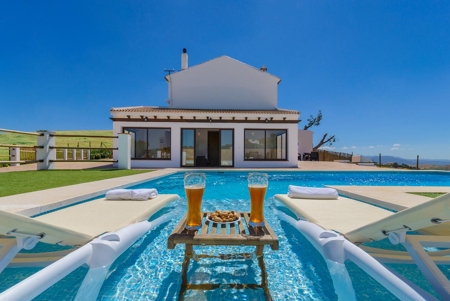
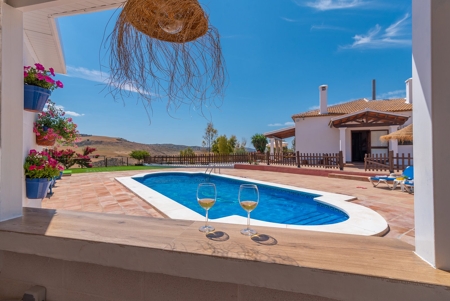




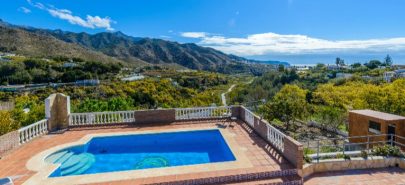



A few years ago, when enjoying a very relaxed two weeks in a finca in the hills of Sedella, we decided do some exploring and headed for Antequera.
It was a national holiday that day, so not much was open. We headed for the fabulous Alcazaba which was an interesting few hours walking around listening to the audio guide and taking in the awesome views as we went. By the time we were done, we’d worked up quite a hunger and on our way down came across this little restaurant that had a few tables out on pavement under the trees.
A Spanish nonna emerged from the restaurant with menus and showed us to a table… the menus were in Spanish and she rattled off some highlights of the menu. She didn’t speak a single word of English, and back then we didn’t know any Spanish (we have since started learning the language). A little while later she emerged carrying several plates of tapas that we’d kind-of-randomly chosen… each plate was oh-so-seriously tasty!!! Some of the best tapas we’ve ever eaten… you could say we’re somewhat discerning when it comes to tapas.
We often think back to that day and the awesome food we ate!! 😋😋